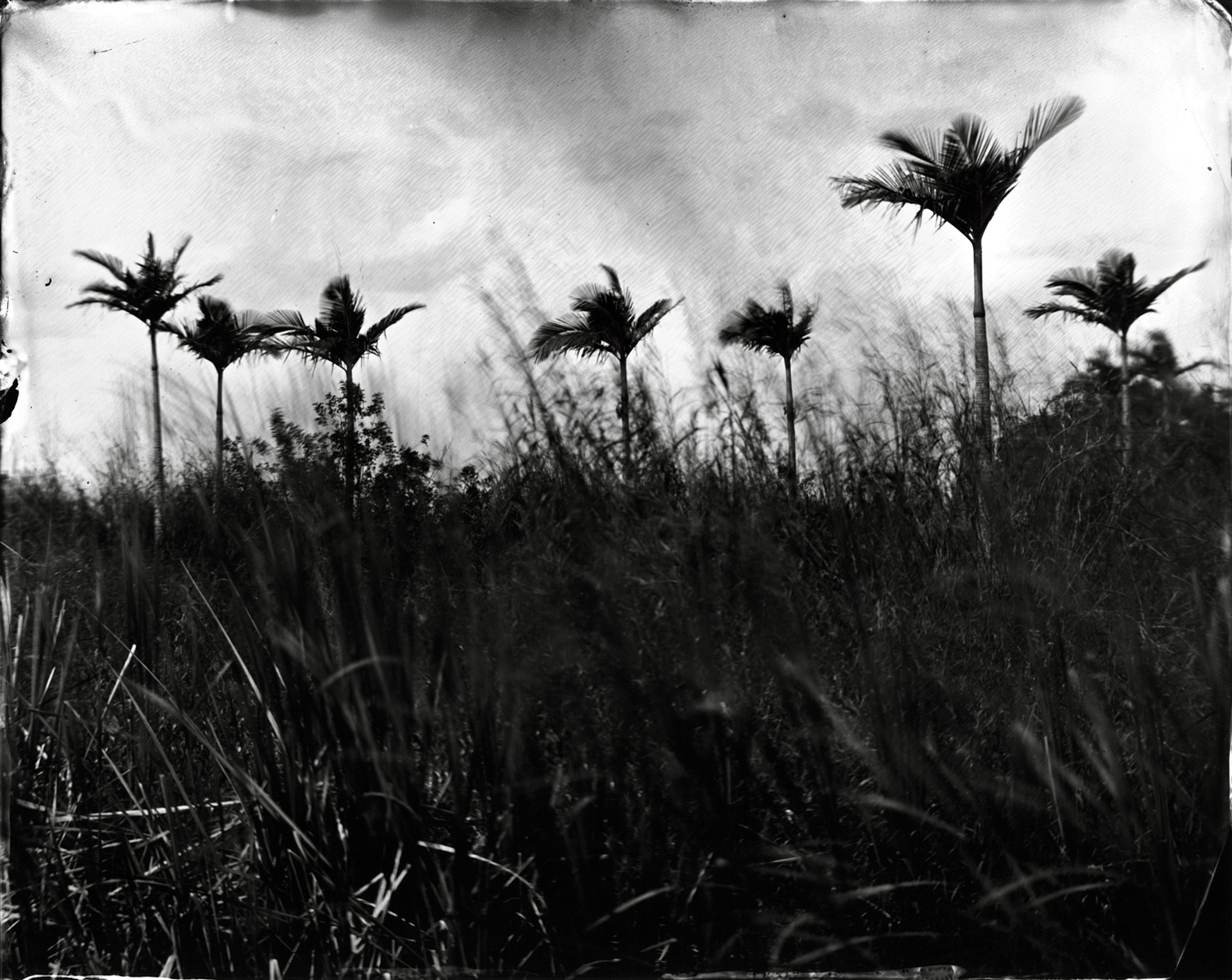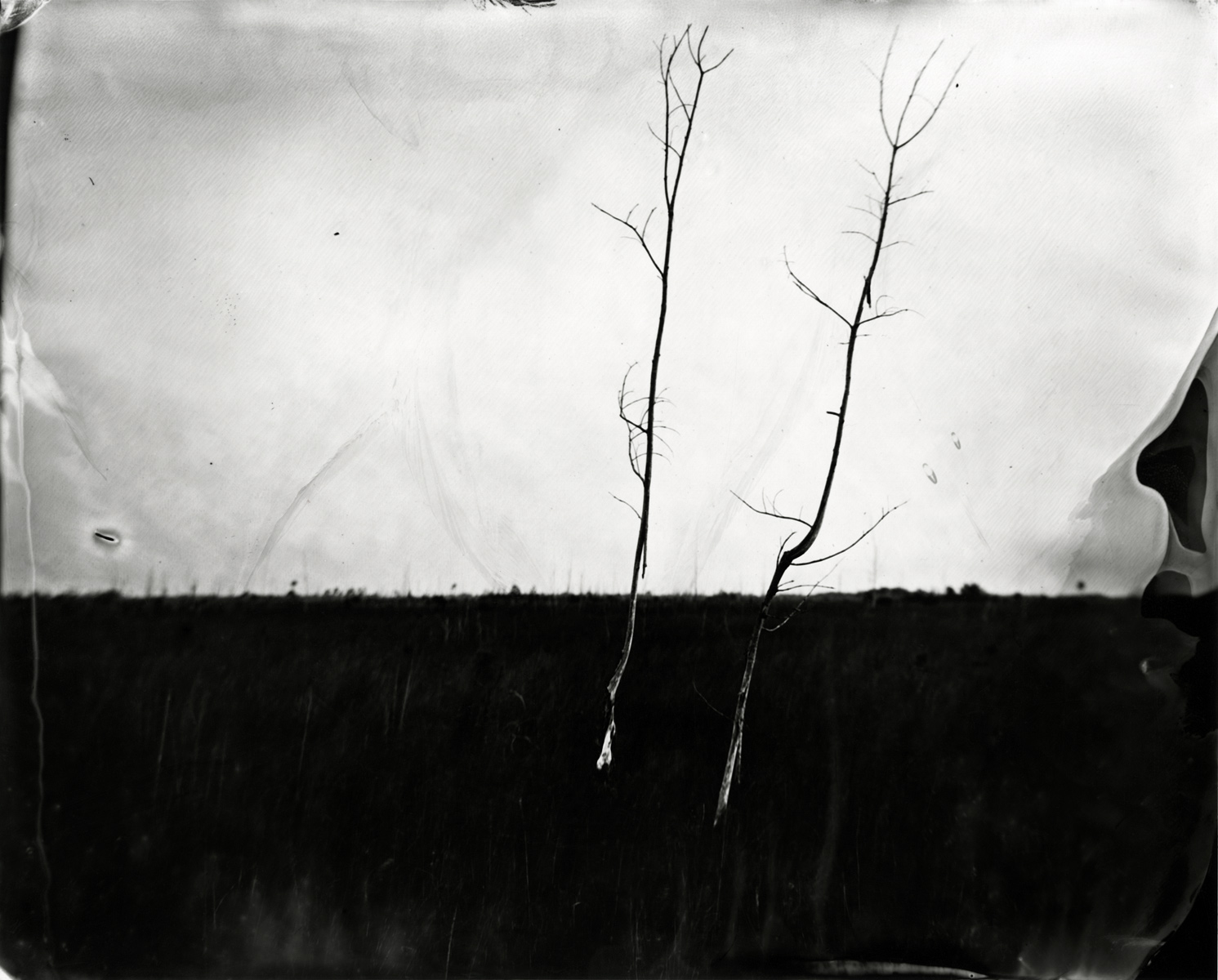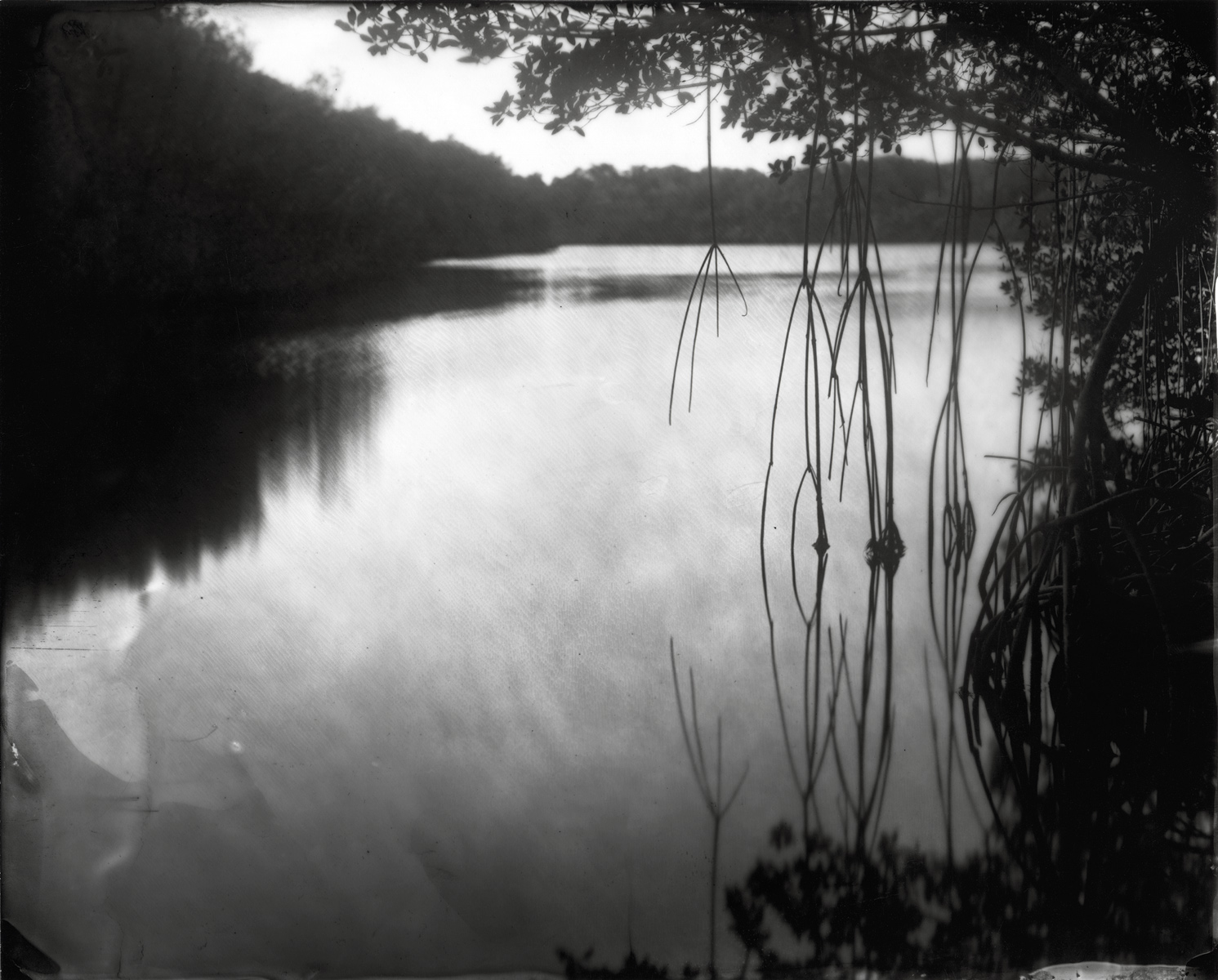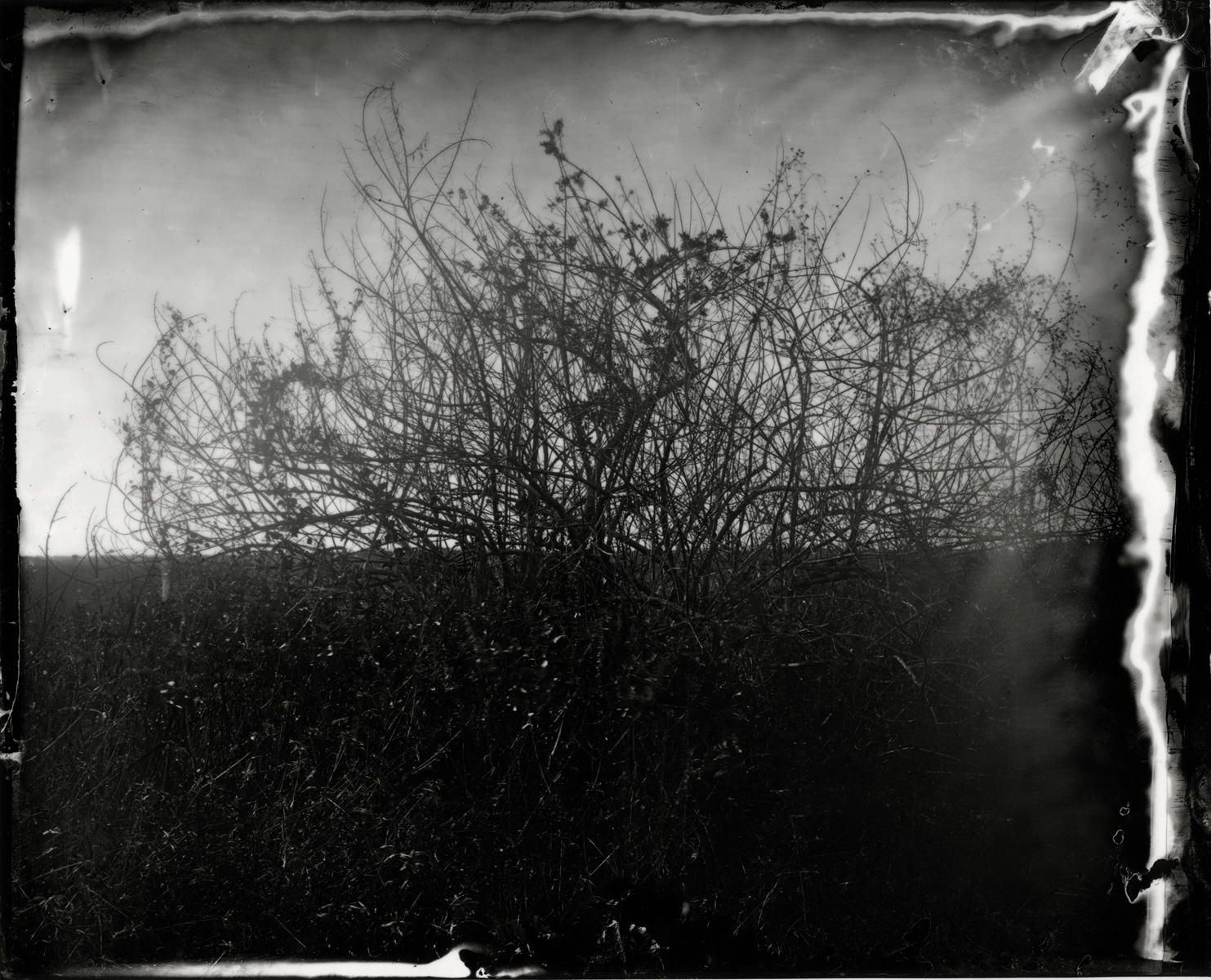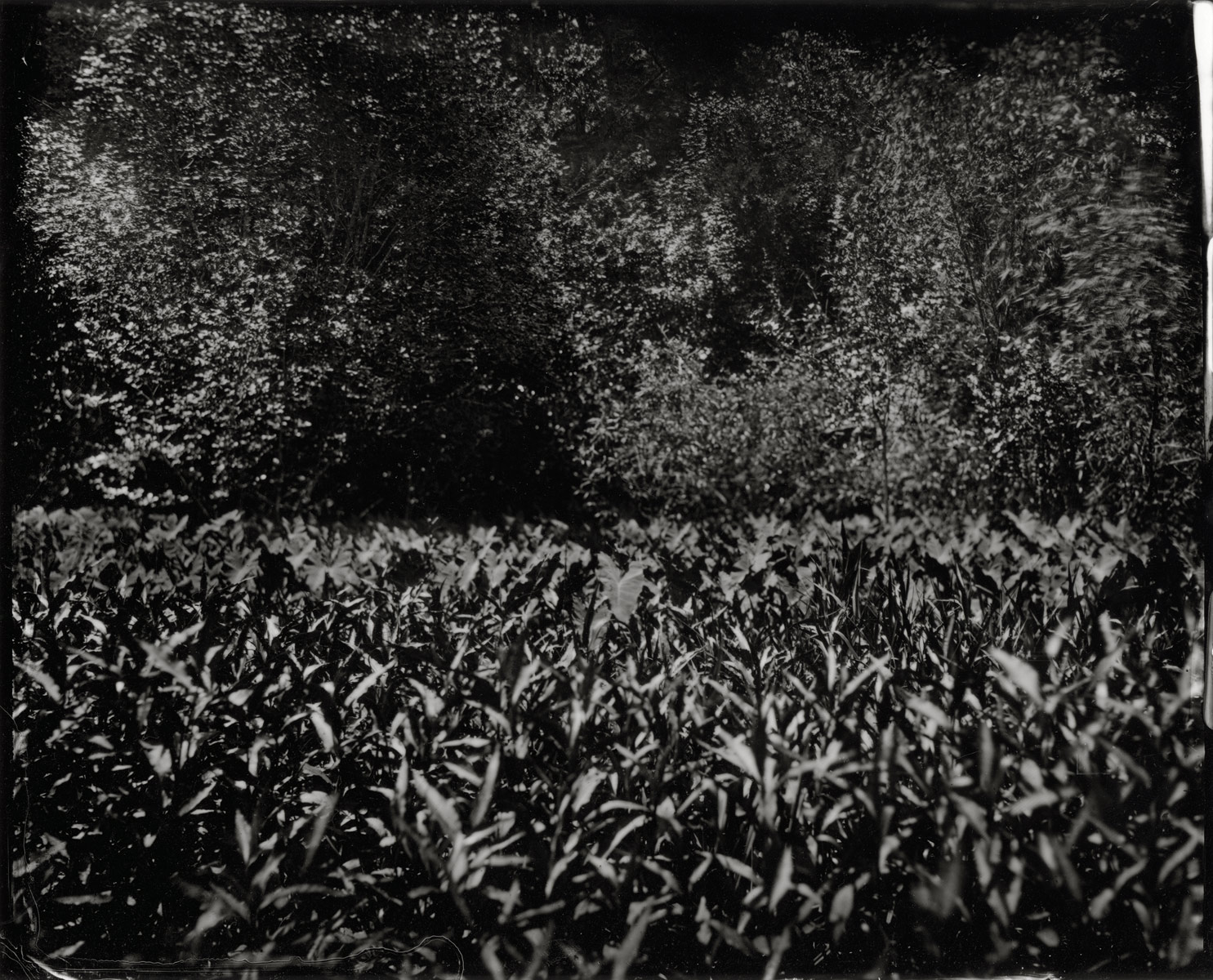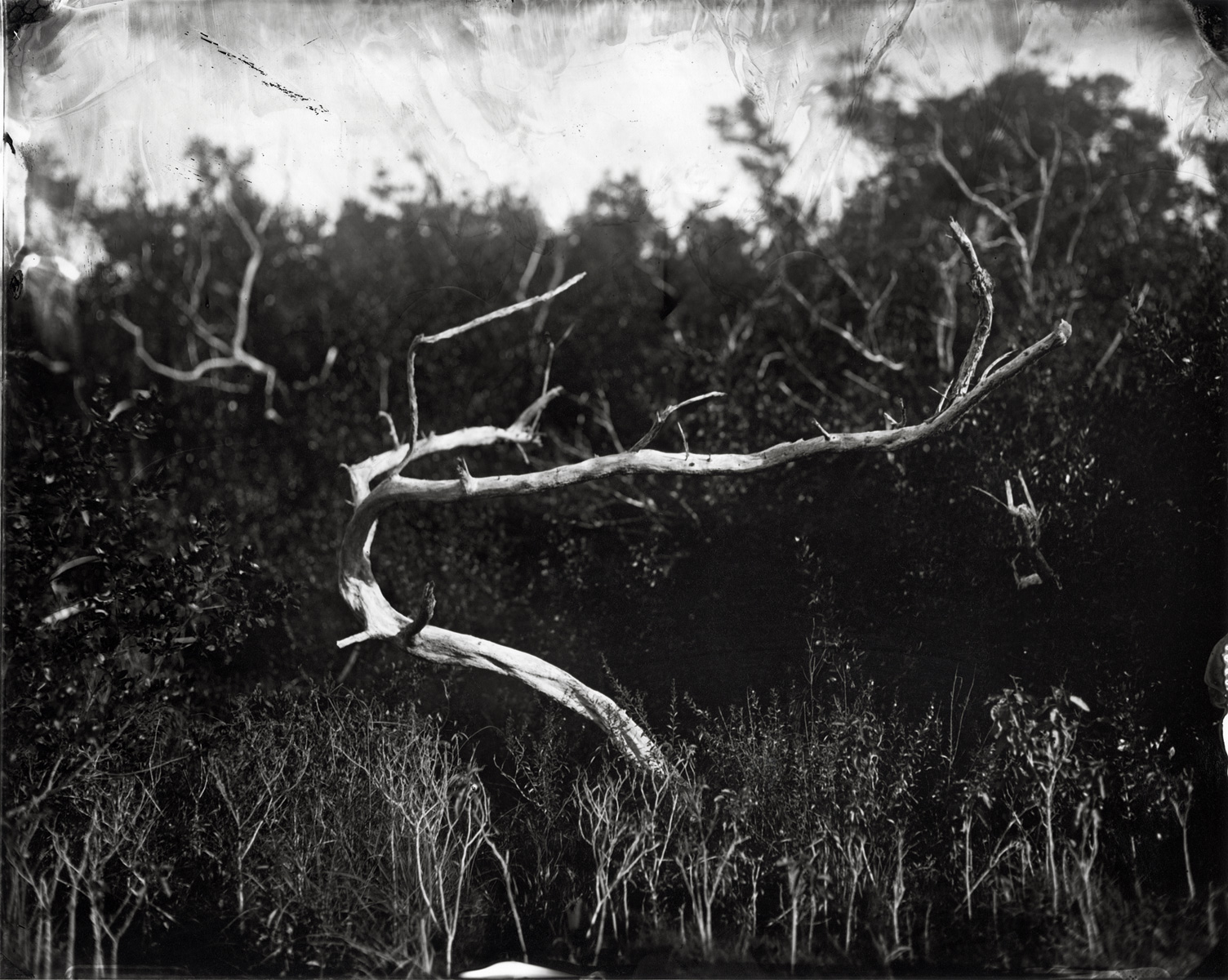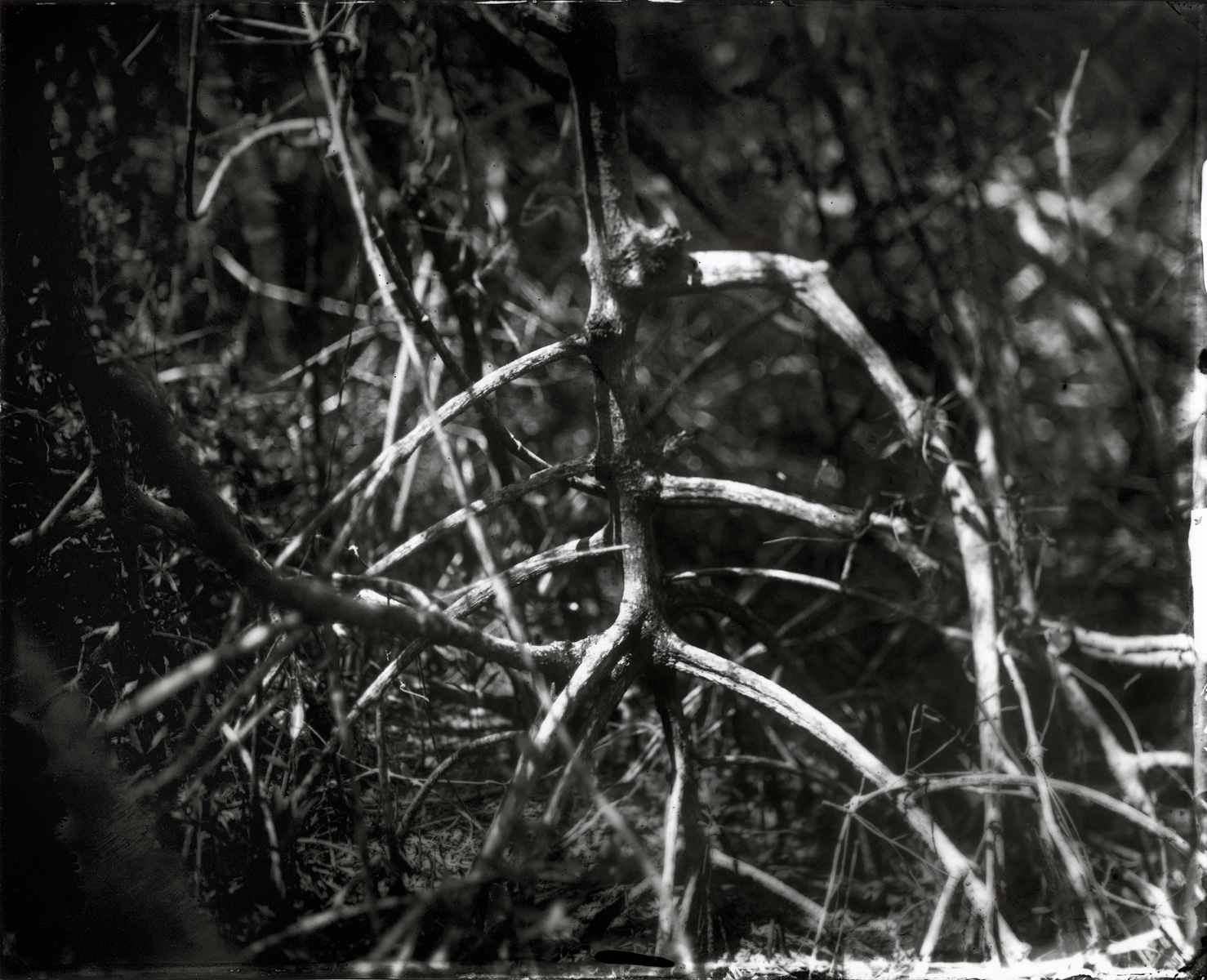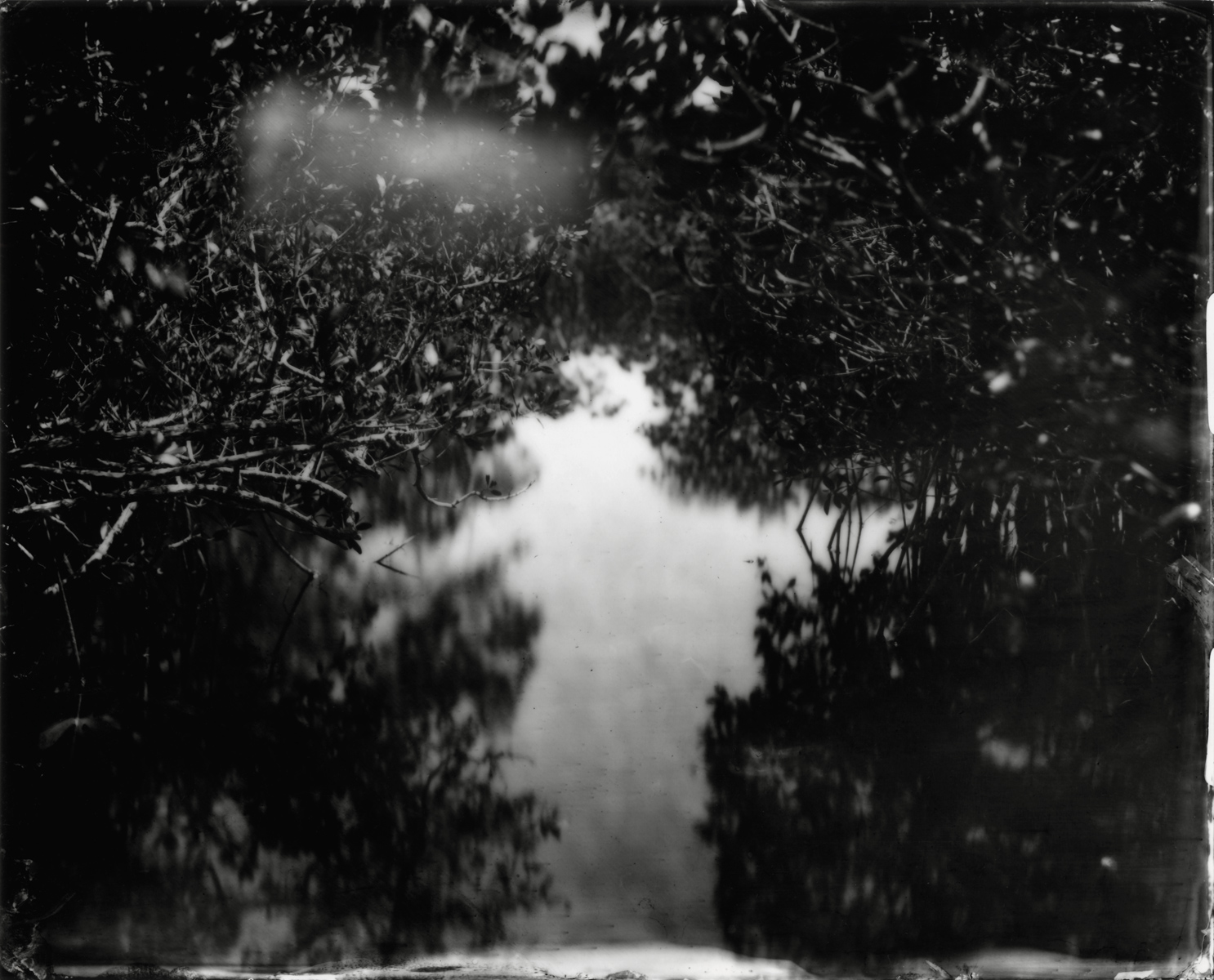The Everglades by Lisa Elmaleh
A Brooklyn-based photographer preserves an essence of the Everglades with beautiful, haunting images.
As a native of South Florida, the Everglades is an ecosystem that has shaped my own history. Inspired by the early photographers of the American west, I have documented the flora and fauna of the Everglades and the surrounding natural areas using my large format 8″x10″ camera and the wet collodion process, a nineteenth century process requiring the image be exposed and developed on site. The collodion process renders light slowly and reveals the passing of time, a quality which is essential to my work.
The Everglades are the only ecological system of its kind. In the dedication of Everglades National Park, president Harry S. Truman stated, “Here are no lofty peaks seeking the sky, no mighty glaciers or rushing streams wearing away the uplifted land. Here is land… serving not as the source of water but as the last receiver of it. To its natural abundance we owe the spectacular plant and animal life that distinguishes the place from all others in our country.â€
To date, more than half of the Everglades have been repurposed for urban and agricultural use. “Freshwater flowing into the park is engineered,” reads the brochure given to all visitors of Everglades National Park. “With the help of pumps, floodgates, and retention ponds along the park’s boundary, the Everglades is presently on life support, alive but diminished.” I hope to preserve an essence of the Everglades, a land we are rapidly losing without knowing the magnitude of our loss.
—Lisa Elmaleh on the Everglades
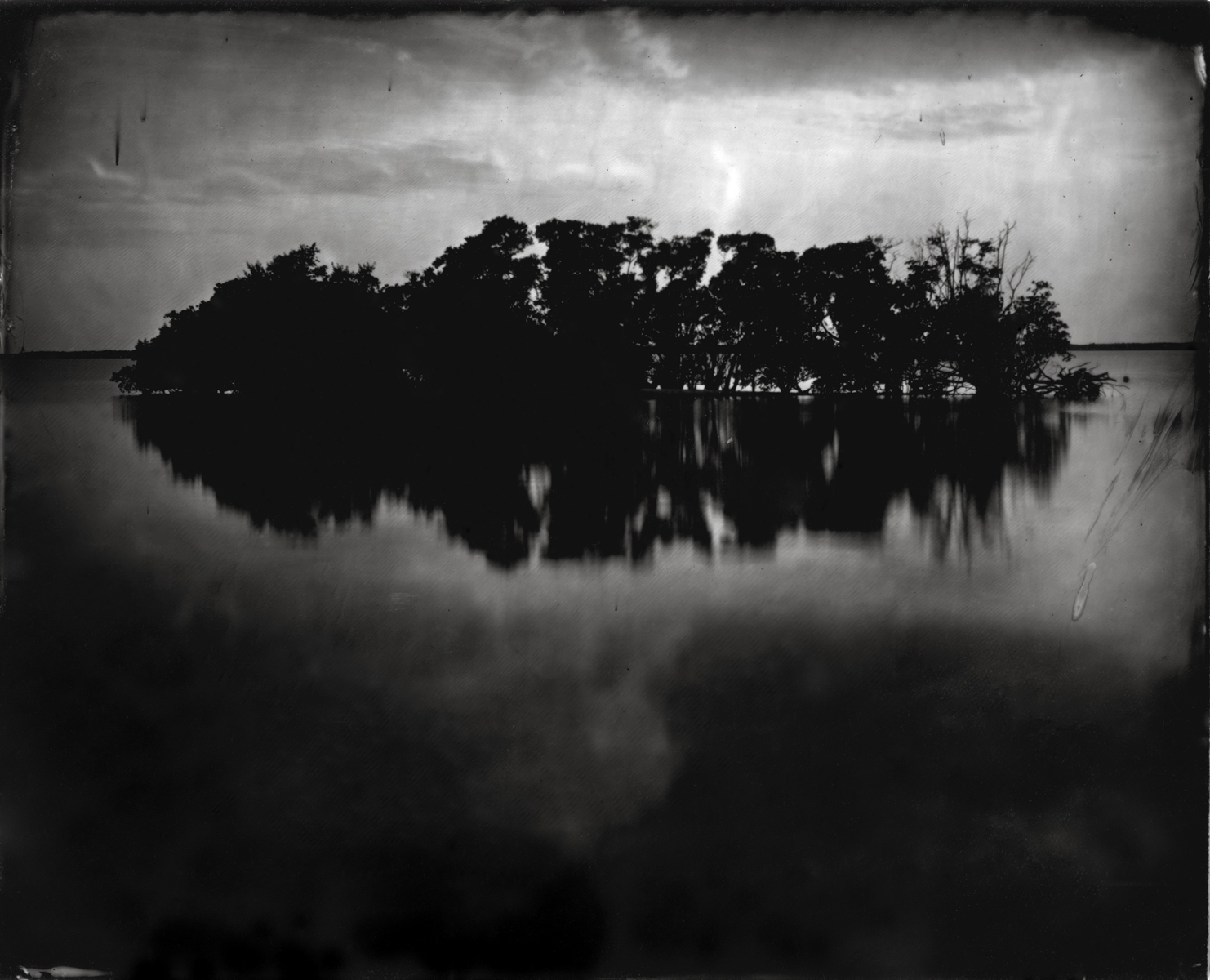 |
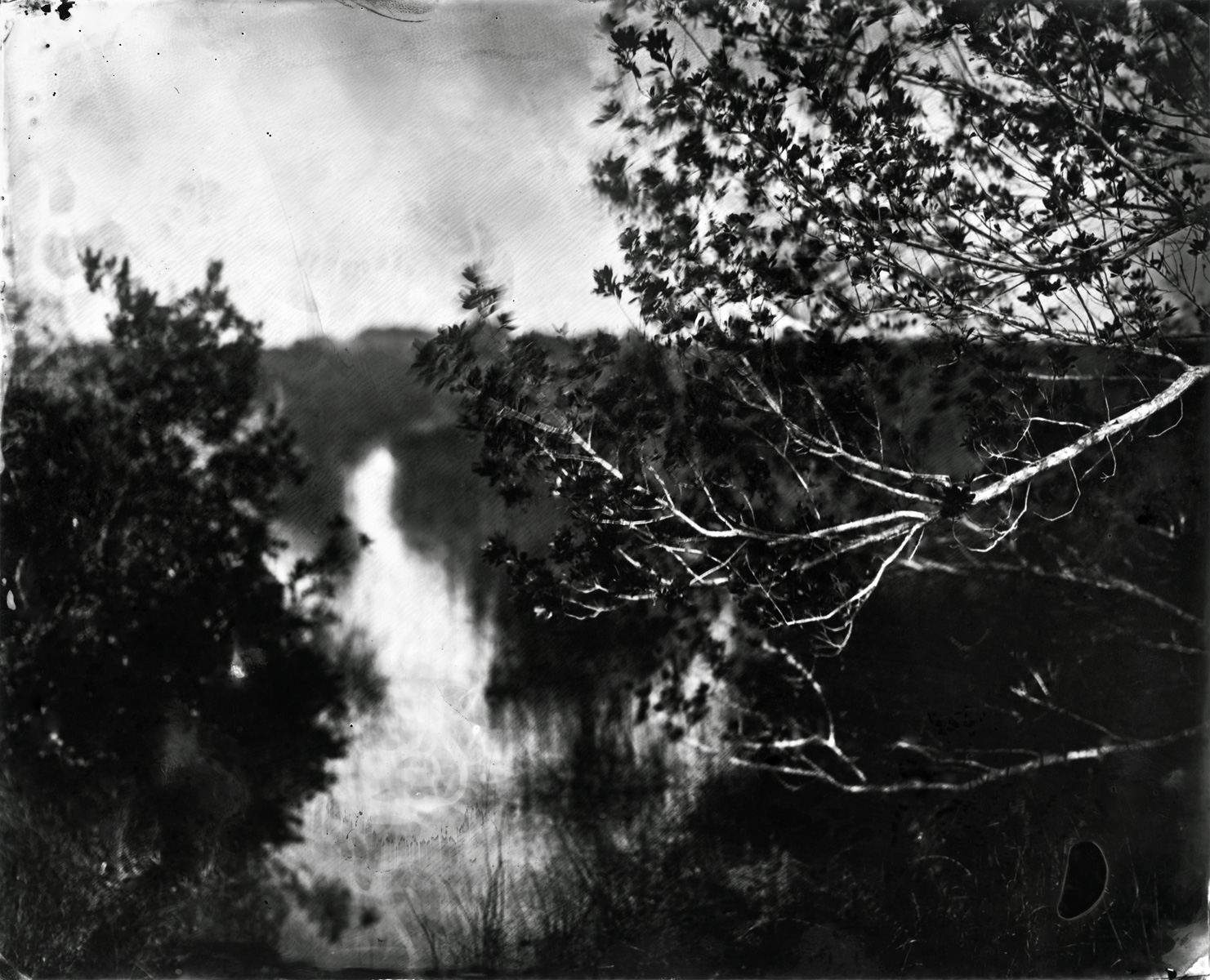 |
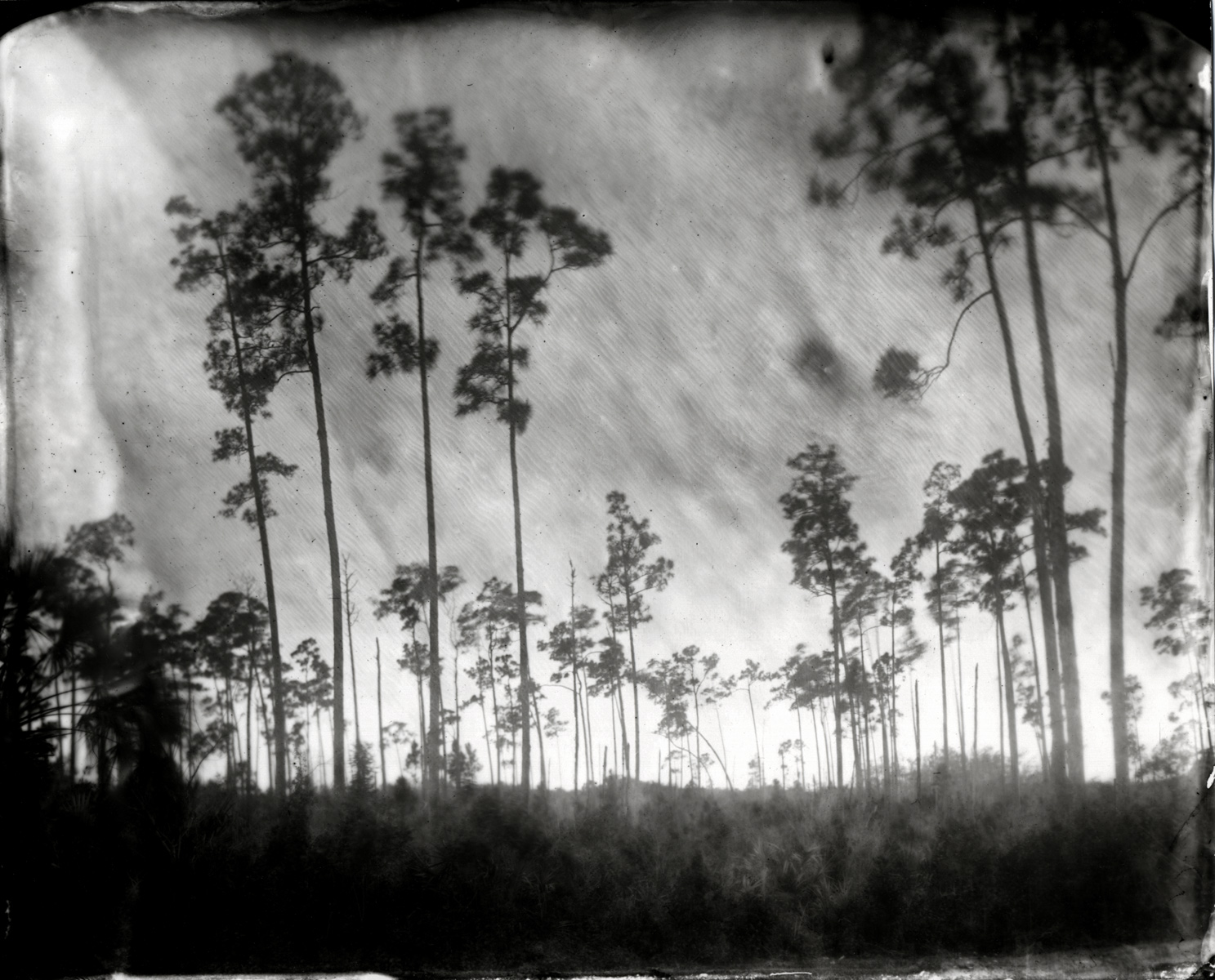 |
Harmony:Â How have the Everglades figured into your personal history?
Elmaleh: I grew up in Miami. My childhood existed in extremely hot temperatures without winter. We had wet seasons and dry seasons. We had tropical storms and hurricanes. The landscape I grew up in was the same landscape as the Everglades—hardwood hammocks, mangrove forests, coastline, and extreme weather. I climbed the gnarled roots of any ficus tree I could. I sat under palm trees and dreamed about what it must be like to look out from the crown. There were large pink birds, and lots of mosquitoes. Summers were hot, and I played outside. I never saw snow until I moved north. I think that growing up in a landscape like that stays with you. It shapes your being. And I think that no matter how long I live in the North, I will never, ever get used to the cold.
Harmony: You used a nineteenth century process requiring the image be exposed and developed on site. Why did you choose this method?
Elmaleh: It felt appropriate for the Everglades series for a few reasons. One reason in particular is because the Everglades started being drained and developed for real estate and farmland right around the same time the collodion process was widely being used. In that way, it felt historically significant.
Another reason why I use the wet collodion process is for the way the process renders light. The wet collodion process renders the image over a longer period of time than film, so in a multiple second exposure, one will see the blur of branches moving in the wind, or the streak of a bird in the sky. The Everglades is very much alive, and I think this process captures it.
There is also a fluid, dark quality that the collodion process gives to the resulting image. For all of its light and beauty, the Everglades is a mysterious place with a dark human history. The Seminole Native Americans of South Florida were chased into the Everglades after a series of violent wars with the settlers. Many bloody battles were fought there.
Today, farmlands and housing developments encroach on the edges of the protected Everglades. Canals drain much of the essential water from the Everglades. The Everglades is on life support—man-made pumps dispense fresh water back into the Everglades. The future of the Everglades is dark and unknown.
Harmony: In another series of your images called “Rooted” you talk about the importance of losing yourself in nature. Tell me more about that.
Elmaleh: Being in nature is one of the most essential parts of a human existence. Living in New York City only highlights that to me. The earth gives us life—oxygen, water, food. Nature is a key element of our existence. It is so much bigger than we are. To be lost in nature is to reconnect with the smallness of being human.
Harmony:Â If you could work in another medium, what would it be and why?
Elmaleh: I would be a musician [see her photos of musicians here]. I feel like music connects in a deep, primitive way. Plus, I love to dance. You can’t really dance to any other form of art. Well, I guess you could, but who would want to dance with a painting?


